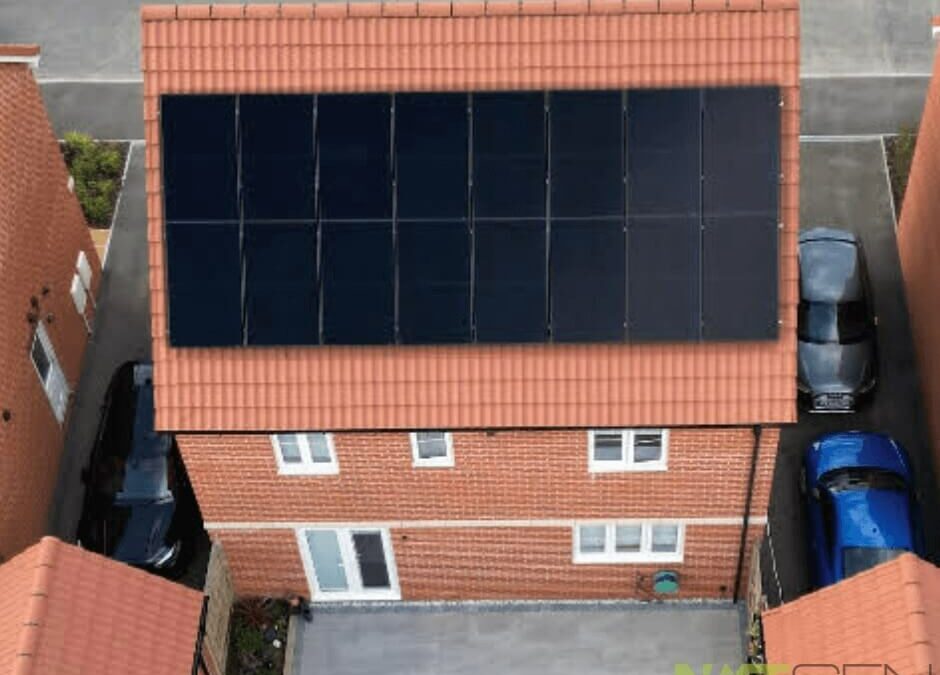


Harnessing the power of the sun is an attractive proposition for many UK homeowners. But before diving headfirst into solar energy, a crucial question arises: how many solar panels can fit on your roof?
The answer, unfortunately, isn’t a simple one. It’s a captivating interplay between several factors, each one requiring careful consideration.
Understanding Your Energy Needs
The number of solar panels you’ll need hinges on your home’s energy consumption. Here’s where some detective work comes in:
- Size and Occupancy: Larger homes with more occupants typically use more electricity.
- Work From Home: Working remotely translates to increased daytime power usage.
- Energy Efficiency: Well-insulated homes require less energy for heating and cooling.
- Appliance Usage: Energy-guzzling appliances like dishwashers and tumble dryers significantly impact consumption.
By analysing your electricity bills or using a solar panel calculator, you can estimate your home’s energy needs.
Sunlight Availability: A Seasonal Affair
The sun’s generosity varies throughout the year. Here in the UK, winter brings shorter days and lower sunlight angles, impacting energy generation. However, spring, summer, and early autumn bathe your home in longer stretches of direct sunlight, maximizing power production.
Luckily, resources like The Met Office’s UK climate averages provide valuable insights into sunlight hours throughout the year. Combining this data with your energy needs can help you determine the optimal number of solar panels.
| Month | Average UK Peak Sun Hours Per Day |
|---|---|
| January | 2 hours |
| February | 3 hours |
| March | 4 hours |
| April | 6 hours |
| May | 6 hours |
| June | 7 hours |
| July | 7 hours |
| August | 6 hours |
| September | 5 hours |
| October | 4 hours |
| November | 3 hours |
| December | 2 hours |
The Roof: A Strong Foundation
Your roof plays a critical role. It needs to be structurally sound to support the weight of the solar panels, especially if you have high energy demands and require a larger solar panel system. Additionally, usable roof space is crucial. Architectural features like skylights and constant shade can limit the available area.
Measuring your roof’s usable area involves multiplying its length by the slope height and then by two, minus any obstructed areas. Alternatively, a professional solar panel installer, like NXTGEN Energy can assess your roof remotely for optimal solar panel placement.
The Panel Puzzle: Size and Regulations
Solar panels come in various sizes depending on the manufacturer. Consulting your chosen manufacturer will provide exact dimensions. The average dimensions of residential solar panels in the UK are typically 2 meters (approx. 79 inches) long and 1 meter (approx. 39 inches) wide, with a thickness of between 3cm (approx. 1.2 inches) to 5cm (approx. 2 inches).
When it comes to quantity, there’s no set limit in the UK for how many solar panels you can have on your roof. However, for larger solar panel systems, you might need prior approval from the local Distribution Network Operator (DNO) to ensure the National Grid can handle the additional electricity generated by your solar panels.
The Takeaway: A Brighter Future
Determining the perfect number of solar panels requires a multi-faceted approach. By understanding your current energy consumption, sunlight availability, roof suitability, and panel size, you can embark on a solar journey tailored to your needs.
Going solar isn’t just about powering your home; it’s a step towards a greener future. By joining the solar revolution, we can collectively reduce our carbon footprint and inch closer to a net-zero 2050 goal.
Conclusion
With all the information above, you’re now ready to proceed with your solar installation on your roof. But remember to check suitability, weigh the pros and cons, and get professional help.
Feeling motivated and ready to make your roof useful? Want to learn more? Your best option is to talk to one of our friendly solar energy experts on 01268 928 690 or click on the button below and we will help you find the right fit for your home and budget.


 Unveiling the Perfect Fit: How M...
Unveiling the Perfect Fit: How M...


